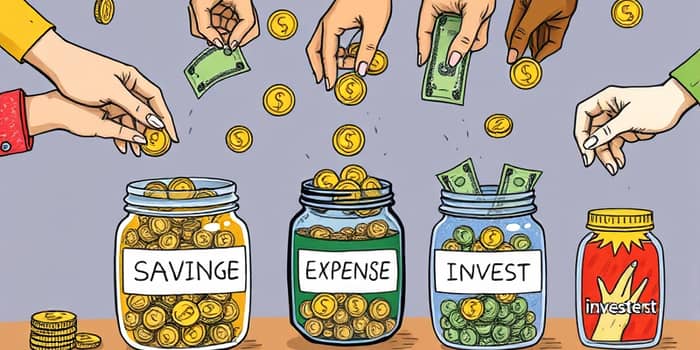
Our relationship with money often feels unpredictable, especially when unexpected income arrives. Without a clear plan, those surprise dollars can slip through our fingers.
By adopting a structured approach, you can align your money with goals and transform every windfall into progress. Let’s explore how to assign every dollar—even the unexpected ones—a meaningful purpose.
“Giving every dollar a job” involves intentional financial decisions that direct each dollar toward needs, savings, debt repayment, or enjoyment.
Rather than letting surprise income vanish in impulse purchases, this strategy ensures each dollar supports your broader financial vision.
Choosing the right budgeting framework lays the foundation for assigning every dollar effectively. Consider these proven methods:
For example, if you receive a $1,000 bonus under the 50/30/20 rule, $500 covers essentials, $300 fuels fun, and $200 boosts savings.
Intentional budgeting goes beyond numbers. It builds habits, reduces worry, and fosters confidence. By assigning every dollar in advance, you reduce financial stress and anxiety.
This mindful approach cultivates a sense of control. You’ll see progress each month, which strengthens motivation and prevents derailment by impulsive spending.
Windfalls can include tax refunds, work bonuses, cash gifts, side gig earnings, or even lottery wins. Without a plan, these funds often disappear.
Before spending freely, decide how each surprise dollar contributes. You might replenish your emergency fund, reduce high-interest debt, or invest. Remember that maximize each unexpected dollar's potential ensures lasting benefits.
To make the process seamless, automate wherever possible. Set up direct deposits or scheduled transfers so that new income is instantly allocated.
Another useful tactic is creating bucket accounts or sub-accounts for specific purposes—emergency savings, travel, taxes, or gifts—so you always know what’s available.
Dollar-Cost Averaging offers a powerful way to invest surplus funds. By investing equal amounts at regular intervals, you smooth out market volatility and avoid poor timing.
This example shows how steady investments can lower your average price per share over time.
Irregular income and volatility pose real hurdles. Workers with fluctuating paychecks benefit from larger emergency cushions—aim for 6–12 months of expenses.
When emergencies strike, assign a portion of any windfall to your safety net first. If you face high-interest debt, balance the urge to save with aggressive debt repayment using avalanche or snowball methods.
Imagine Sarah receives a $2,000 year-end bonus. She applies a hybrid 50/30/20-plus method: $800 to her emergency fund, $600 toward an old credit card, $400 to her retirement account, and $200 for a weekend getaway.
This proactive distribution prevented new debt, bolstered savings, and acknowledged the importance of celebration—all without derailing her broader plan.
Giving every dollar a job, especially those unexpected ones, transforms chaos into purpose. You cultivate resilience, reduce “leakage,” and make tangible strides toward your goals.
Embrace automation, smart strategies, and a mindful mindset to ensure no dollar ever goes to waste. Your future self will thank you for each thoughtful allocation.
References













